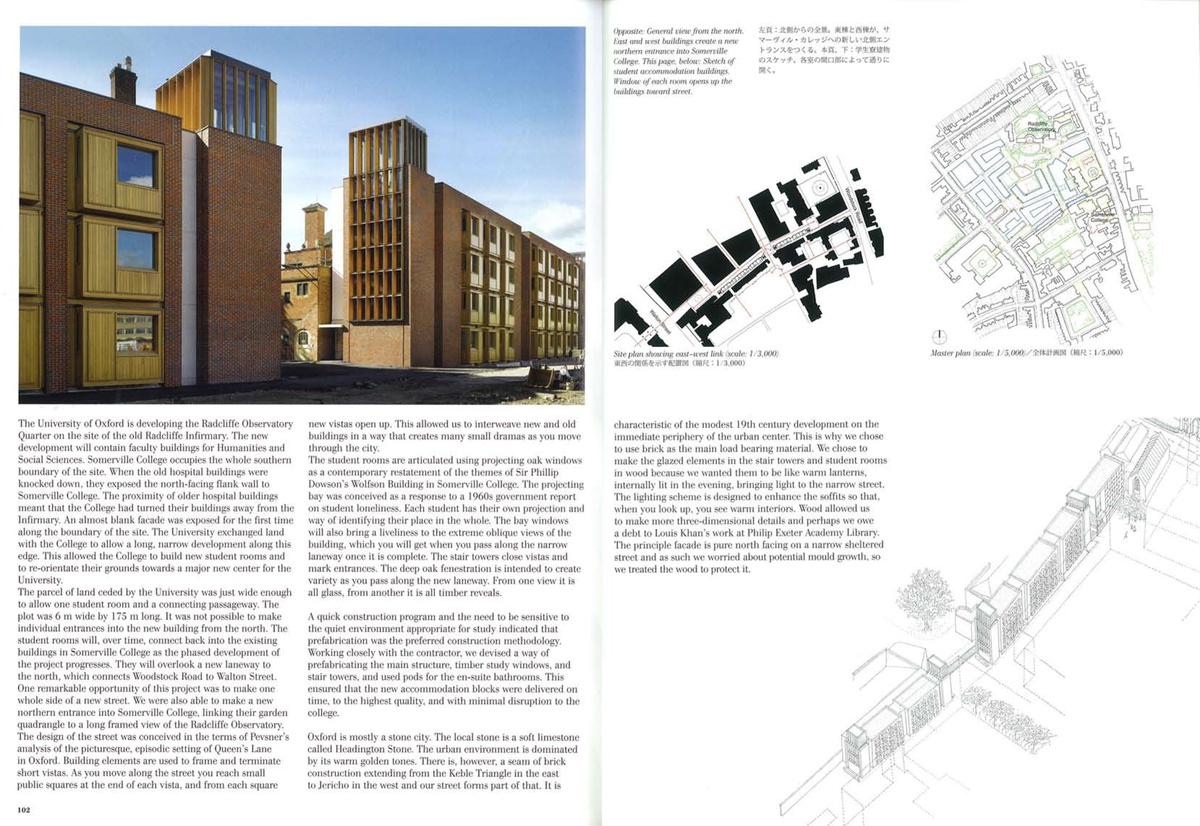C3 ARTICLE ON BISHOP EDWARD KING CHAPEL
JUNE 2014
The Bishop Edward King chapel has been featured in the June 2014 edition of the Korean journal C3. The piece provides a detailed exploration of the themes behind the design and the construction processes for the award winning project. It includes technical drawings and photographic images to support the text.
‘ETERNAL PROBLEMS’, RIBA JOURNAL EXHIBITION REVIEW BY NIALL MCLAUGHLIN
JUNE 2014
Niall McLaughlin has written a piece for the RIBA Journal on the symbolic use of architecture within early Renaissance Art. The essay describes observations based on a visit to the ‘Building the Picture’ exhibition, currently on show at the National Gallery in London. The exhibition gathers together architectonic works by the Italian masters of the 14th-16th centuries that explore real and imagined architectural space.
The article observes how the Renaissance artists’ enthusiasms for displaying their newly discovered skills of perspective and knowledge of the classical forms are conflated with a religious symbolism. The tropes of classical architecture are used as visual metaphors for the divine and eternal. The article explores the effect of these spaces on the viewer and the reasons why the idealised architecture tends to alienate rather than engage.
A+U FEATURE ON SOMERVILLE COLLEGE ACCOMMODATION
MAY 2014

The Japanese journal a+u has published an account of the practice’s student accommodation for Somerville College, Oxford. The theme of this month’s publication is ‘New Landscapes of Wooden Architecture’ and features an international selection of projects that explore new aspects of wood technology and its potential within cities. The article gives a description on the themes and processes behind the project, placing it within the context of the historic university city and the surrounding Radcliffe Infirmary Quarter.
It is illustrated with working details of the bespoke timber glazing for the stair tower lanterns, as well as the prefabricated timber projecting bay window units for the student bedrooms, with their integral desk and bench seat overlooking the street.
‘We chose to make the glazed elements in the stair towers and student rooms in wood because we wanted them to be like warm lanterns, internally lit in the evening, bringing light to the narrow street…Wood allowed us to make more three-dimensional details…we owe a debt to Louis Kahn’s work at Philip Exeter Academy Library.’ NM
